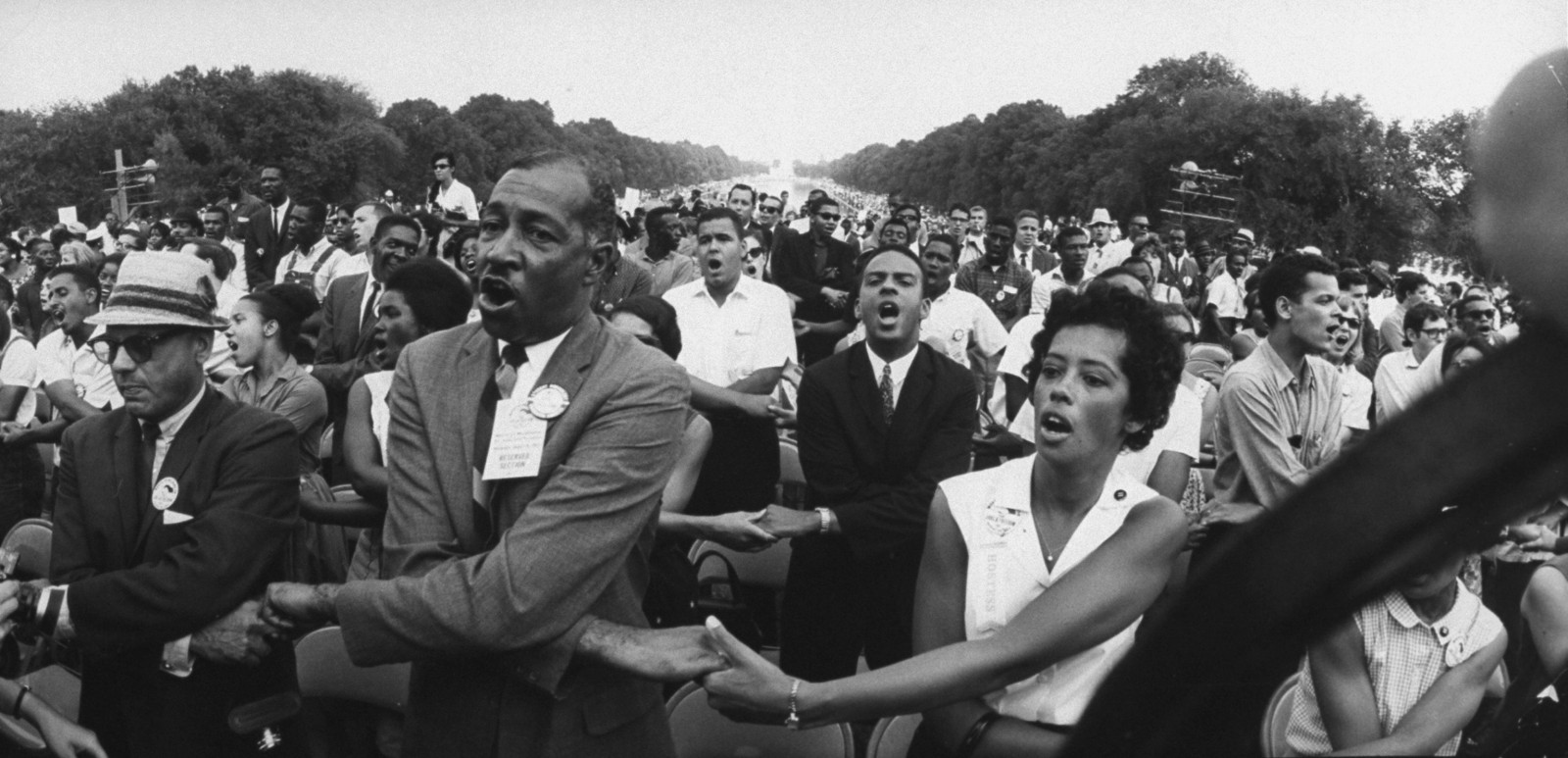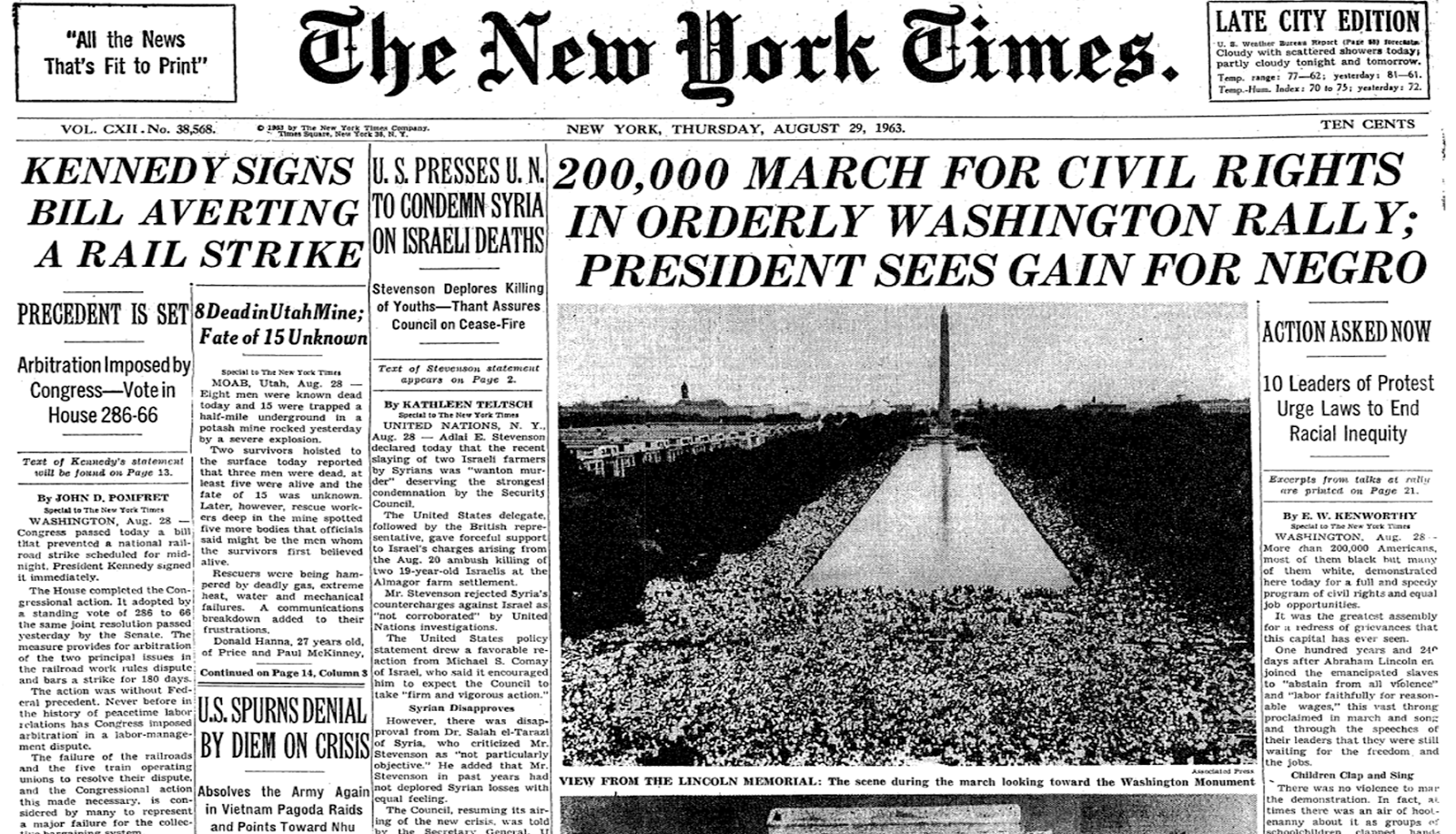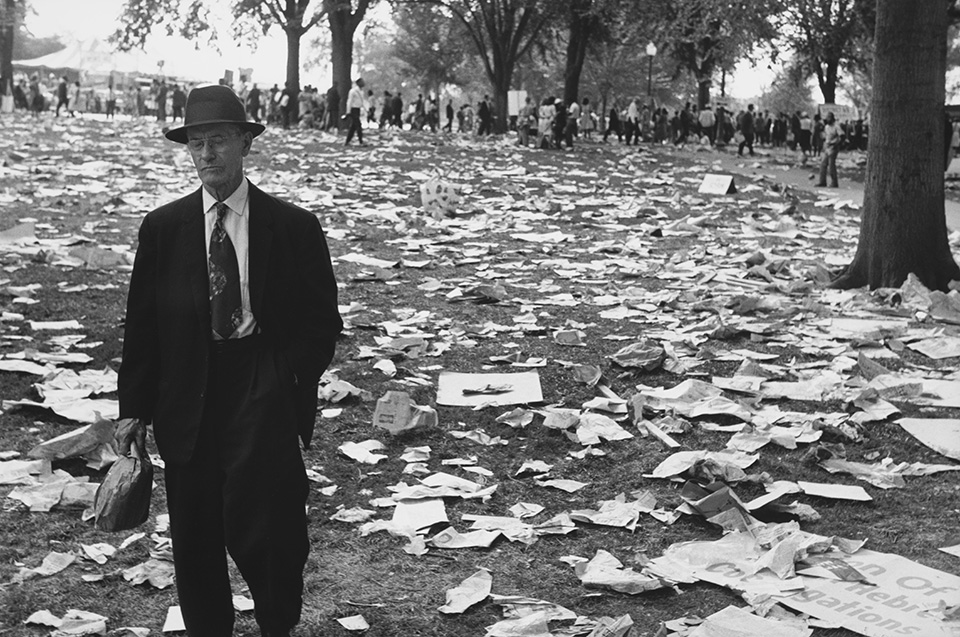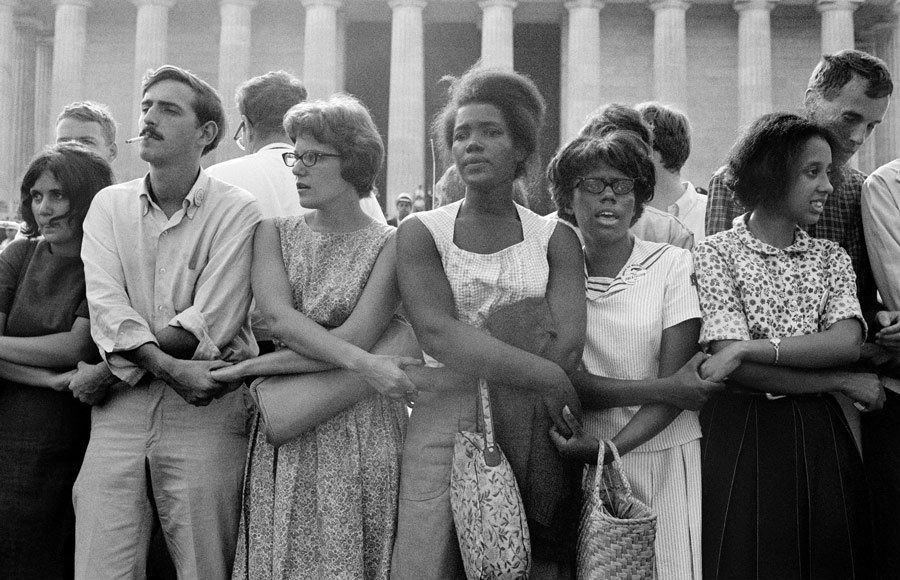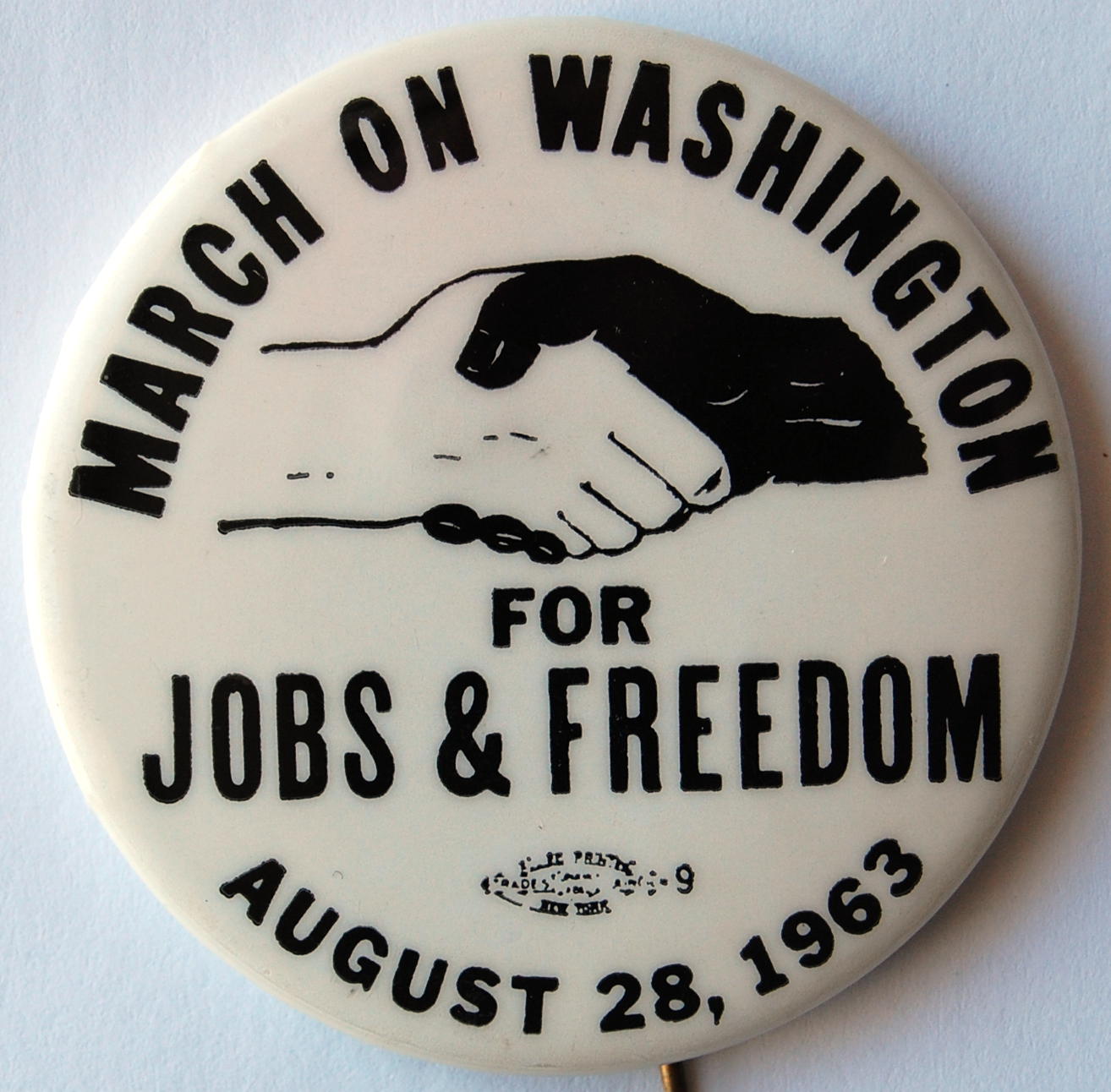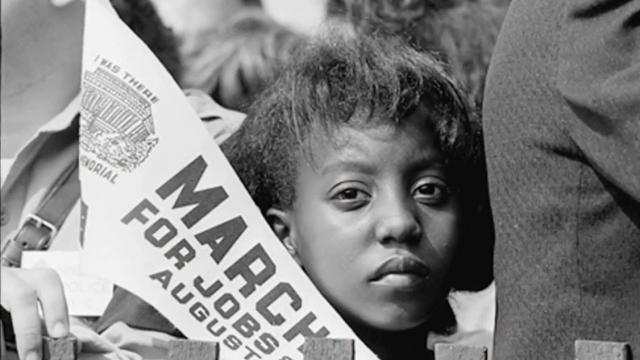
It could have been left as a relatively small event that would make little impact, but plans for the 50th anniversary of 1963's March on Washington appear to have taken another course.
The Supreme Court's gutting of the Voting Rights Act and the acquittal of George Zimmerman for the murder of Trayvon Martin have served as bitter reminders of not only how far we still are from realizing the vision for jobs and freedom that brought over 250,000 to Washington, DC, in 1963. They have also underlined how ephemeral the gains made by the Civil Rights Movement currently are.
In this context, no 50th anniversary event can remain a celebration of days gone by. It will inevitably be seen as a test of commitment towards regenerating a movement that can steer this country in a direction towards economic justice and equality.
An Unfinished Path
The path to fundamental social change is not straight and clearly paved. Generations are consumed by building social movements powerful enough to topple an unjust status quo, only to fall back, sometimes for decades, if they haven't been able to pull out the economic and political grievances by their roots.
Nevertheless, even when no substantial progress is being made or gains are rolled back, the lessons of previous struggles are still absorbed and adjusted according to modern conditions by new layers of activists. The path to making another world possible may submerge for long periods only to again become visible and inviting on a broader and potentially more advanced level.
This pattern describes the history of the struggle against racial inequality in the U.S. Because the oppression of Black people functions as a cornerstone for the ruling elite's ability to divide and exploit workers and make huge profits for big business, removing racism requires a deep-going revolutionary movement. While such movements may appear at times to erupt spontaneously out of nowhere, they embody the accumulated understanding of decades, even centuries of struggle. This process is reflected in the history of civil rights mass mobilizations on Washington, D.C.
In the spring of 1942 hundreds of thousands joined the "March on Washington Movement," started and led by A. Philip Randolph, President of the AFL "Brotherhood of Sleeping Car Porters." Because President Roosevelt had turned a deaf ear to the demands of 16 million black Americans, they quickly responded to the call for independent mass collective action. Alarmed by this prospect, Roosevelt temporarily set up the "Fair Employment Practices Commission" to hear charges of discrimination and forbid discrimination by defense contractors.
Apparently accepting this response, Randolph and his associates called the march off. This took the pressure off Roosevelt who continued to only pay lip service to African-American demands for racial equality.
1963's March on Washington
In part because of this lesson, the organizers of 1963's March on Washington, which included A. Philip Randolph again, could not be persuaded by President Kennedy to call off the event as President Roosevelt had done. They had come to understand that if they left the corporate politicians to do their work in the normal way, promises would be made but nothing would be done. Popular power needed to be asserted to change the political climate and challenge the stability of the status quo.
To effectively unite this power, it was necessary to link the issues of economic justice with the fight against segregation and legal discrimination. That is why the March on Washington's key slogan was "For Jobs and Freedom."
The ten demands of the march included both calls for the "Withholding of Federal funds from all programs in which discrimination exists" and "Desegregation of all school districts in 1963." These were combined with "A massive federal program to train and place unemployed workers — Negro and white — on meaningful dignified jobs at decent wages" and "A national minimum wage act that will give all Americans a decent standard of living."
Not only did the linking of economic justice for all and racial equality strengthen the numbers of the march, it encouraged further questioning and organizing that could confront the foundation of the big business elite's power — the exploitation of workers and racial oppression. It was because of this potentially revolutionary direction that the politicians were compelled to act. While no effective race related civil rights legislation had been passed since Reconstruction — that is, for 86 years — in 1964 the Civil Rights Act was passed followed by the Voting Rights Act in 1965.
Needs Unmet
Regardless of the significance of these gains, they were only partial. In an Economic Policy Institute statement entitled "The Unfinished March: an Overview" by Algernon Austin, a detailed analysis is laid out that demonstrates how far we are from realizing the vision behind 1963's March on Washington.
Even with the greatest employment crisis since the 1930s and an unemployment rate for Blacks that remains double that of whites, there is no talk of legislation for a federal jobs program to be paid for by taxing the rich. Today’s minimum wage of $7.25 per hour is unbelievably far from 1963's demand for a living wage, which would be over $13 in today’s dollars. Opportunities for education and housing remain in fact, though not law, segregated and unequal.
This is not to mention the effects for Blacks of living under a legal system that is quick to approve and encourage state repression against them. Blacks now constitute almost 1 million of the 2.3 million people that are incarcerated. Blacks are arrested at nearly six times the rate of whites. And, according to a report by the Malcolm X Grassroots Movement, in 2012, 313 blacks were killed by police and some vigilantes and security guards without trial — most were unarmed, like Trayvon Martin.
President Obama, though in some ways a beneficiary of the Civil Rights Movement, has pursued policies in complete opposition to its goals. While Wall Street was bailed out and the Federal Reserve spends over $80 billion a month to fatten the banks (Quantitative Easing), cuts in Medicare, Medicaid and Social Security are promoted and the scourge of unemployment, growing poverty and institutional racism remain unaddressed. And the administration's support of drone attacks, most often against innocent people, have made the U.S., in the words of Cornel West, the George Zimmerman of the world.
The Anniversary's Prospect
In spite of this, according to the Guardian's Paul Lewis, "Obama is understood to have been invited to play a central role in the King commemorations...." Those who are extending this invitation no doubt justify it by saying it is necessary to pressure Obama to play a more progressive role. However, they are sacrificing the essential political independence to do this.
There will be pressure not to embarrass the President, though the effects of his policies and inaction are what need to be unambiguously opposed. The 1963 March on Washington was about speaking truth to power. Its 50th Anniversary must continue this tradition rather than choke it which would bolster the calculations of President Obama and his big business party. If 2013's March on Washington is to contribute to a social movement that can challenge corporate rule, it must mobilize around people's needs that they are ready to fight for regardless of how much they conflict with the big business agenda of the Democrats and Republicans.
It is hard to say how many will attend the 50th Anniversary events. Toward the end of June, Martin Luther King III said that he expected "...at least 10,000 to converge on Washington DC for at least five days of events in late August." It is possible he may have revised his expectations, but this is far too small a number to have a significant impact and greatly underestimates the level of discontent that can be mobilized if a serious effort is made. Only the corporate politicians would be happy with this number, since the last thing they want to see develop is a mass movement large enough to get out of their control.
The 1963 March on Washington demanded jobs and freedom, and it had significant union support. Today, almost all organized labor has endorsed the August 24 demonstration <<http://www.laborfightback.org/>>. Accordingly, this event represents an important opportunity where labor and the civil rights movement can unite around a common agenda that would unite all working people and include the following demands that have already been endorsed by organized labor:
-
A federal program guaranteeing good-paying jobs for all.
-
No cuts to Social Security, Medicare, and Medicaid — improve and expand the safety net.
-
Justice for Trayvon Martin — stop racist murders.
-
Restore and expand the Voting Rights Act – stop voter suppression.
-
Stop military interventions — money for human needs, not war.
All working people are currently under attack, whether they are being forced to accept wage cuts, health care cuts, attacks on their pensions, or high rates of unemployment. These afflictions target Black and Latino workers the most, but all working people are threatened by a lowered standard of living, while more and more of society’s wealth is seized by the rich.
The August 24 demonstration could serve as the first step in uniting all working people to fight for a better world, a world where everyone has a job with a living wage, where health care is a human right, where public schools and social services are well funded, and where the rich are not showered with bailouts and ever more generous tax breaks.
Mark Vorpahl is a union steward, social justice activist and a writer for Workers Action and Occupy.com. He can be reached at Portland@workerscompass.org.
3 WAYS TO SHOW YOUR SUPPORT
- Log in to post comments

